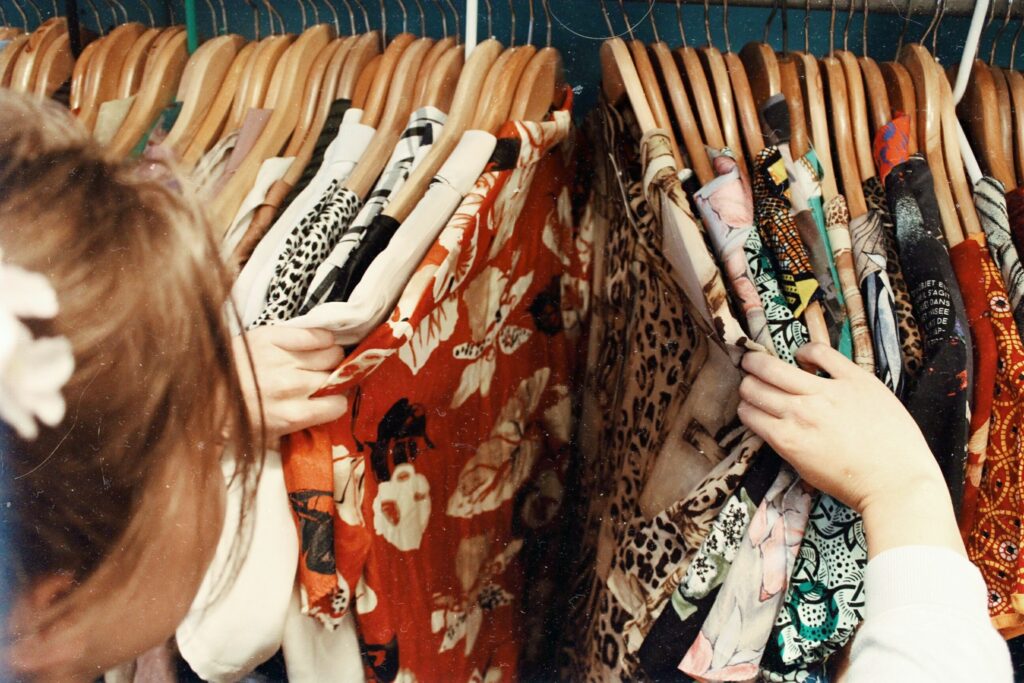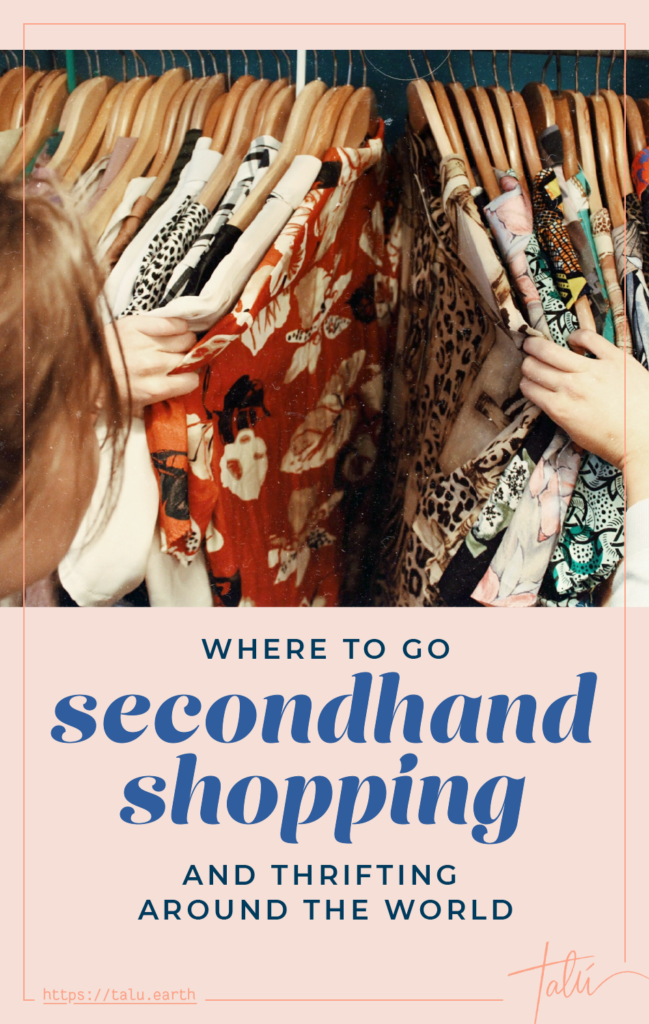The most sustainable wardrobe is made of the pieces you already own.
The second most sustainable wardrobe is made of the pieces someone else has already owned. So secondhand shopping is a lifesaver.
Thrift shopping has been on the rise for a decade, and if you’re anything like me, you love the thrill of poring over garments on the hunt for something special. But, let’s be honest, it’s definitely time-consuming.
It’s also worth it. For one, you can find some amazing fabrics and garments. And the planet needs us to make the effort.
Even including all donated clothes, 84% of our clothing ends up in landfills and incinerators. That’s hundreds of tonnes of fabric.
Donated clothing rarely ends up being recycled (which is generally a good thing, although it’s not as good as being reused), but more often than not, it goes straight to landfill.
Or, worse, it ends up in someone else’s landfill overseas, where it creates massive trash and health problems in communities that never wanted our garbage to begin with.
So, I think “adopt don’t shop” definitely applies to clothing.

Where can I buy secondhand clothes online?
There are plenty of places to buy secondhand clothes online, no matter where you’re located.
Many, many online thrifters ship worldwide, especially when the pieces are collected at a central location. If it’s an independent seller market like eBay, the seller will choose how far they’re willing to ship.
The downside for many places (like, for example, Australia) is that the farther away you are, the more expensive shipping will be.
If you’re in Europe, you can shop for secondhand clothes online at…
- ASOS Marketplace, full of vintage garments and independent brands.
- Beyond Retro, which offers reclaimed and vintage pieces.
- Thrift+, raising funds for charities through the buying and selling of secondhand clothes.
- One Scoop Store, a curated range of pre-loved pieces with a brick and mortar store in the UK.
- Vinted, offering secondhand clothing that ships worldwide.
- Depop, another popular global marketplace to buy and sell secondhand.
There are dozens more options in the UK and the rest of Europe. But I know what decision paralysis is like, so I’ll stop my list here!

The US also has a booming secondhand shopping market.
The general structure of most online thrifting in the US that I’ve seen is independent sellers, offering their own items. That’s true for some of the most popular secondhand shopping destinations, like:
- Ebay, where you can get far more than just clothing.
- Depop, the trendy app for cool, curated fashion, mostly sourced from brick and mortar thrift stores and re-sold online.
- Etsy, home to crafts, clothing, and more.
- ThredUP, a larger, accessible secondhand clothing hub.
- Poshmark, for new & used fashion with an emphasis on brand name.
Where to shop secondhand clothing in Latin America.
There is no shortage of online secondhand clothing opportunities around the world. Here are some of the larger ones:
- TROC, a Brazilian online thrift startup turned massive.
- Enjoei, a fashion-forward place for secondhand clothing and home.
- Go Trendier, a place to buy and sell clothes based in Mexico.
- Mercado Libre is an online marketplace that has rapidly grown in the last decade where you can resell anything from clothes, to furniture and find merchants of all kinds.
You can also buy secondhand fabric online for your projects.
You don’t need to buy brand new fabric to start creating or dyeing!
You can find an incredible range of fabrics online, from deadstock to extras from individual people. Try…
- Etsy (most countries)
- Queen of Raw, a New York based site matching sellers & buyers globally.
- Ebay (most countries)
- AnBella Designs (The EU, US, Canada, and some other countries)
- A Thrifty Notion (US-based, but ships internationally with some exceptions)
- Mercado Libre (for LATAM)
Like with all the other places to shop, there are dozens and dozens of secondhand shopping options to choose from.
Where there is money to be made, someone is trying to make it. And secondhand fabrics are a huge market! So, don’t be afraid to search out what works perfectly for you.

At its core, all secondhand shopping is a sustainable practice.
Buying something that has already been created will always be better for the planet than shopping for something new.
Sewing has a long, rich history of being used to repair and extend the life of your clothing. So it just makes sense to continue this effort in the modern world.
(Side note: I’ve written about how to mend holes as well as how to take care of clothing long-term, if this use of sewing interests you!)
Buying vintage or deadstock fabrics is especially useful, as the fabric would certainly otherwise go to waste.
It’s possible to take your journey towards sustainable textiles one step further. My passion is creating new hues with natural dyes to breathe new life into old fabrics and garments!
I can teach you everything you need to know in my Living Colours with the Five Elements natural dyeing workshop. See you there!
Pin this post!
